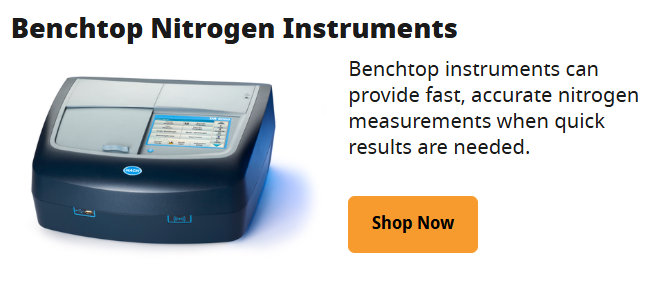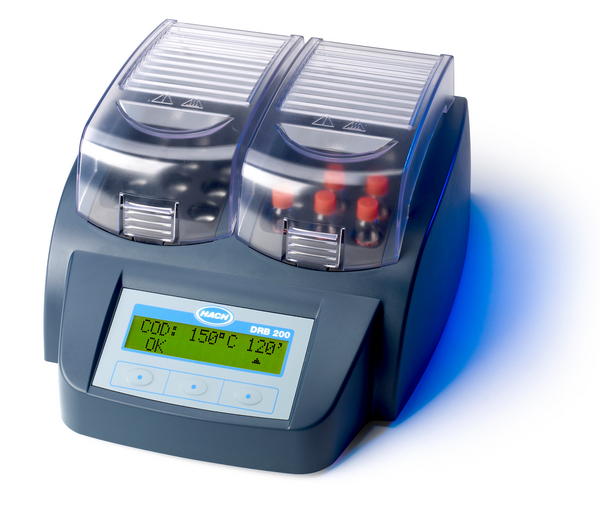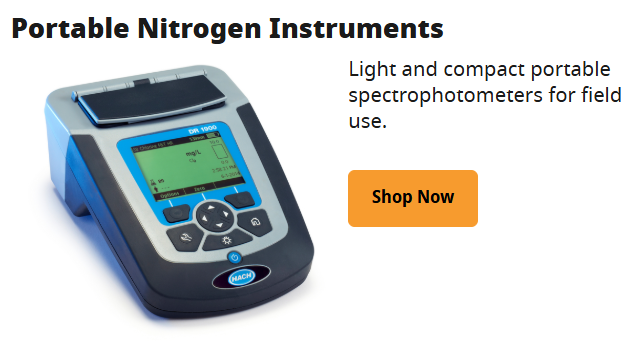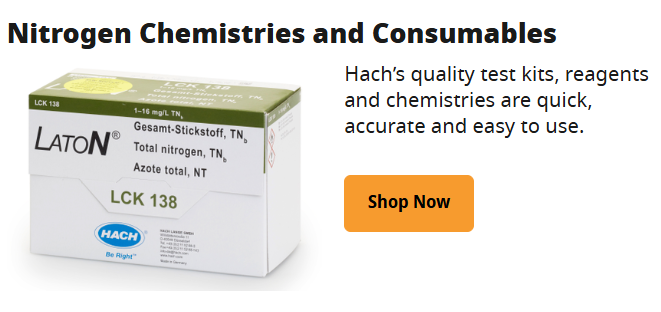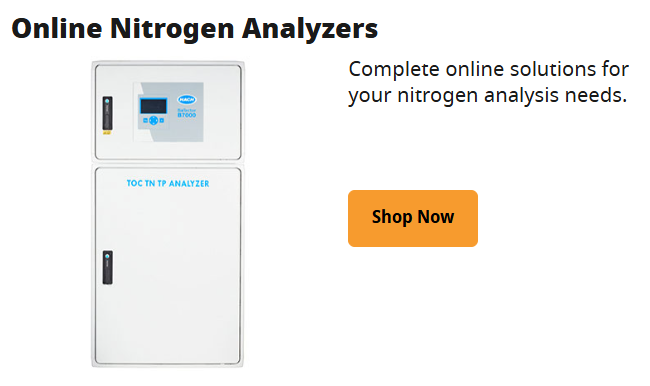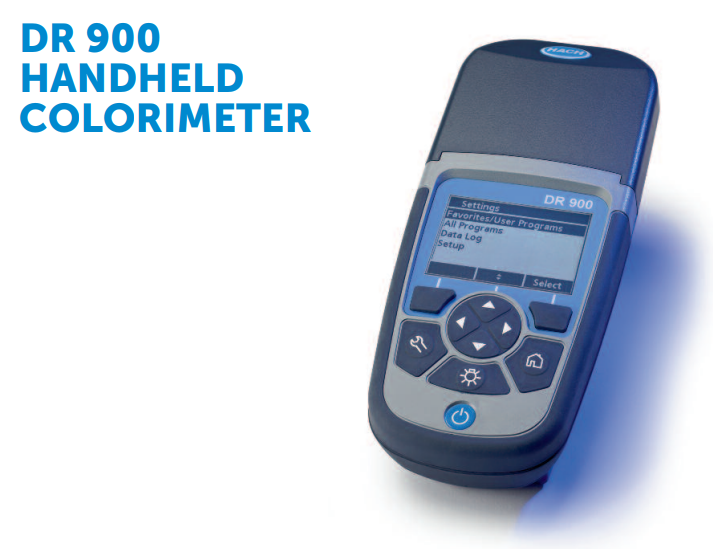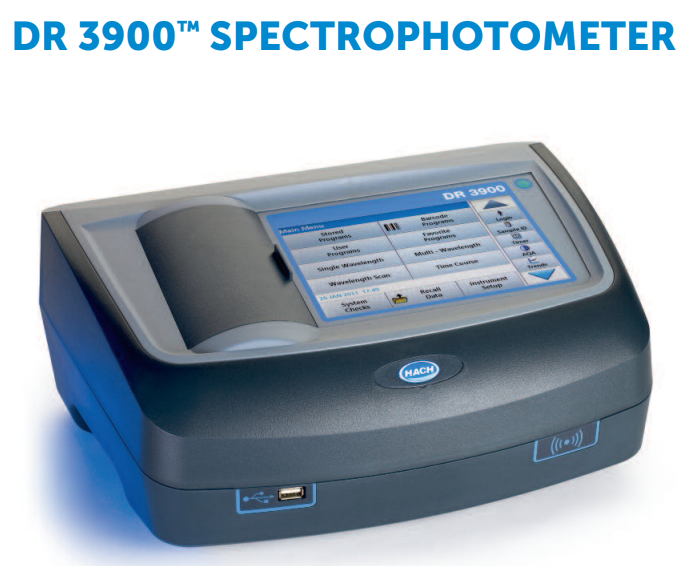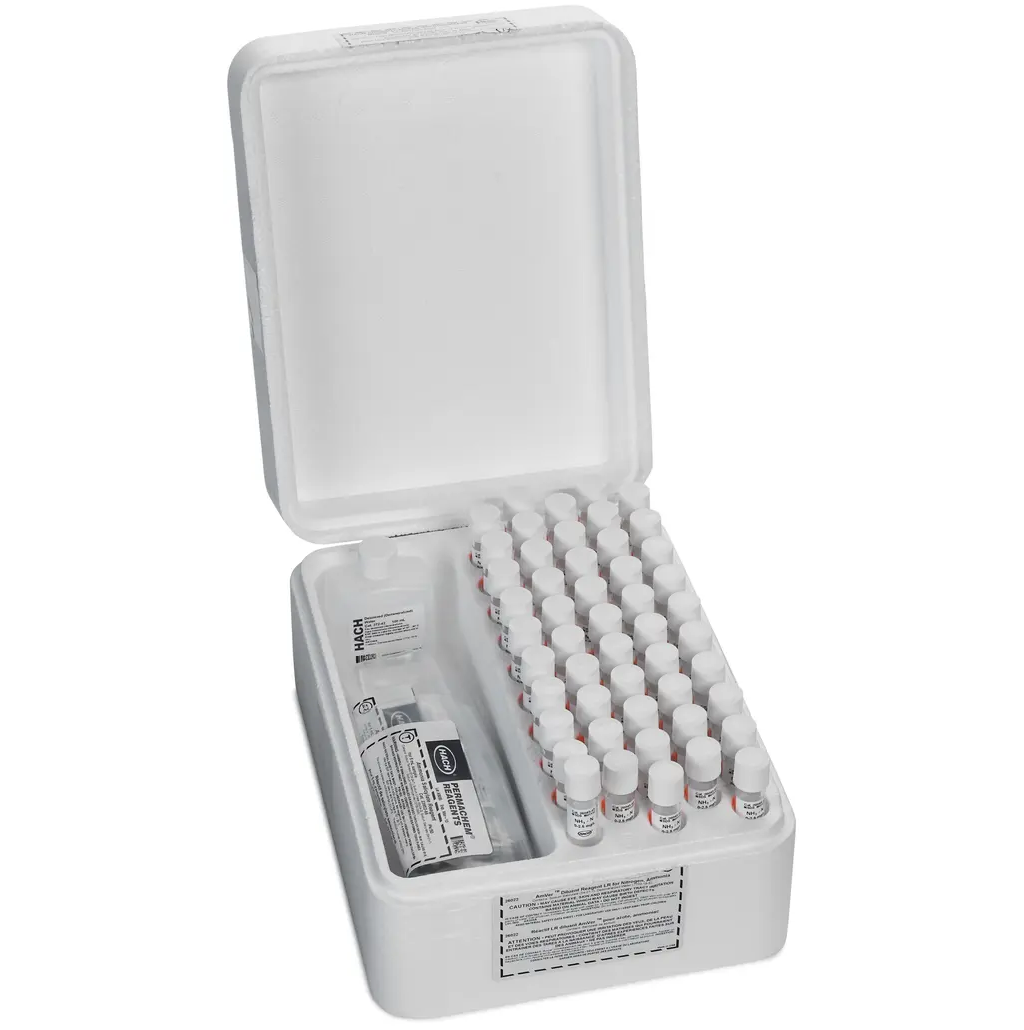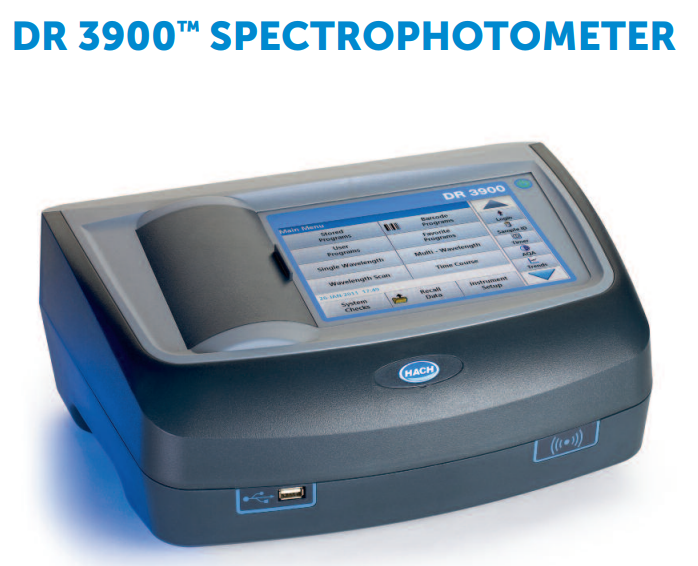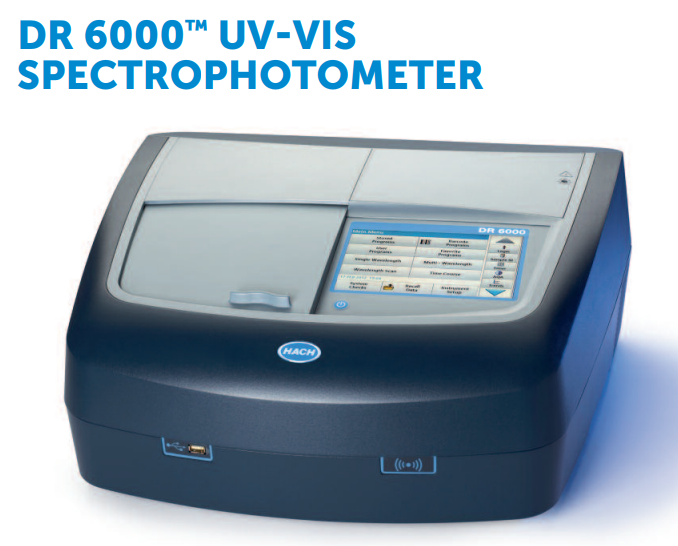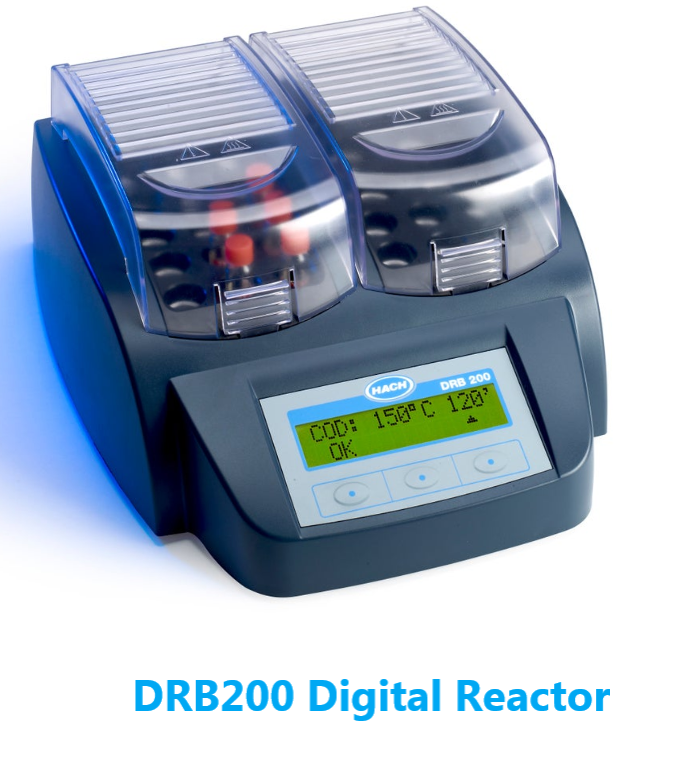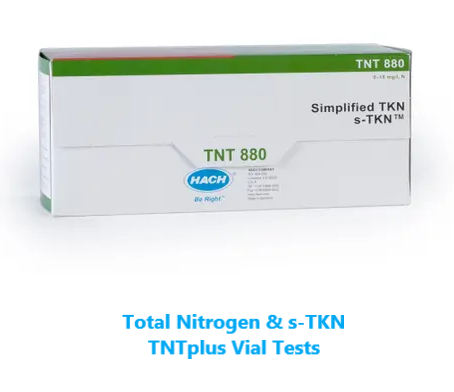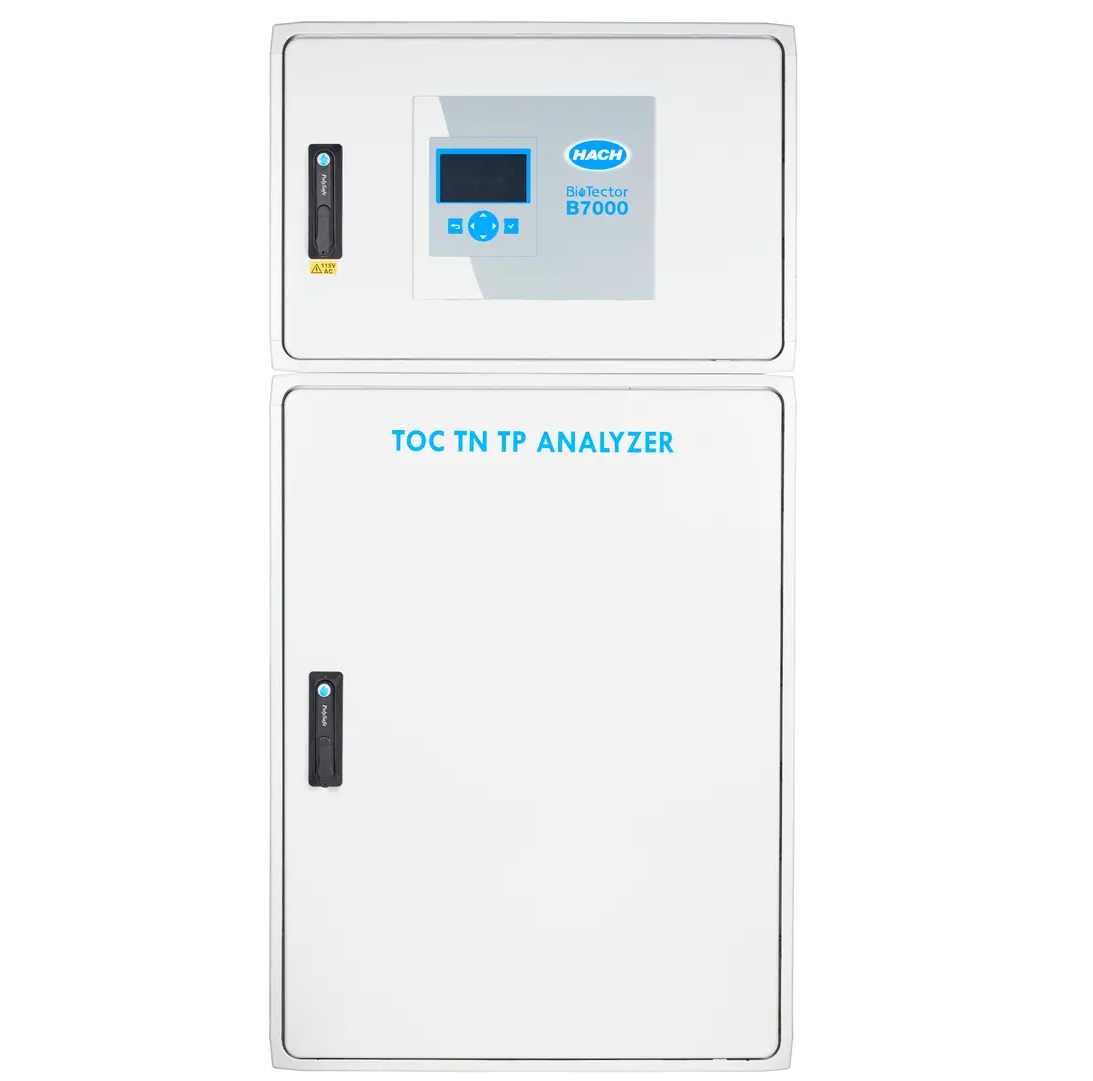水中氮與分析 Nitrogen
Why Measure Nitrogen? 為什麼要測量氮?
While nitrogen in the form of ammonia, nitrite and nitrate is an essential nutrient for plants and animals, excess nitrogen can be detrimental in many cases.
While nitrogen in the form of ammonia, nitrite and nitrate is an essential nutrient for plants and animals, excess nitrogen can be detrimental in many cases.
In bodies of water, high concentrations of nitrogen can cause depletion of DO and thus negatively affect aquatic life.
Drinking water containing excess nitrogen in the form of ammonia or nitrate can pose public health risks. Furthermore, changes in nitrite concentrations in drinking water distribution systems can indicate the onset of nitrification, which compromises water quality.
In wastewater treatment, high concentrations of ammonia in conjunction with elevated pH can be toxic to sludge digestion microbes.
At Hach®, find the testing equipment, resources, training and software you need to successfully monitor and manage nitrogen levels in your specific process application.
Drinking water containing excess nitrogen in the form of ammonia or nitrate can pose public health risks. Furthermore, changes in nitrite concentrations in drinking water distribution systems can indicate the onset of nitrification, which compromises water quality.
In wastewater treatment, high concentrations of ammonia in conjunction with elevated pH can be toxic to sludge digestion microbes.
At Hach®, find the testing equipment, resources, training and software you need to successfully monitor and manage nitrogen levels in your specific process application.
雖然氨、亞硝酸鹽和硝酸鹽形式的氮是動植物的必需營養素,但水中過量的氮在許多情況下是有害的。
Hach協助您成功有效監測和管理特定應用水中氮濃度所需的測試設備方案。
Which Processes Require Nitrogen Monitoring? 哪些程序需要氮監測?
Surface Water, Blended Water and Ground Water 地面水、混合水和地下水
Ammonia, nitrite and nitrate may naturally occur in bodies of water or be present due to fertilizer runoff, animal waste runoff, failing septic systems, blending with chloraminated water or industrial discharges containing corrosion inhibitors. Therefore, it is important to monitor ammonia, nitrite and nitrate levels in order to guide and optimize treatment.
Ammonia, nitrite and nitrate may naturally occur in bodies of water or be present due to fertilizer runoff, animal waste runoff, failing septic systems, blending with chloraminated water or industrial discharges containing corrosion inhibitors. Therefore, it is important to monitor ammonia, nitrite and nitrate levels in order to guide and optimize treatment.
Drinking Water Treatment 飲用水處理
When ammonia is not used during disinfection, its presence in a distribution system may indicate leaching from materials used in the pipework construction or water contamination due to damage in the system. When unwanted ammonia combines with chlorine, it diminishes the disinfection strength of chlorination.
When ammonia is not used during disinfection, its presence in a distribution system may indicate leaching from materials used in the pipework construction or water contamination due to damage in the system. When unwanted ammonia combines with chlorine, it diminishes the disinfection strength of chlorination.
When ammonia is used for disinfection in the chloramination process, its levels must be monitored and managed to safeguard public health.
Aquaculture 水產養殖
As a waste product of aquatic life, ammonia can be toxic to fish and aquatic plants at levels as low as 0.5 mg/L. In established aquariums, ammonia can be rapidly converted to nitrite and eventually nitrate. Most aquariums aim to have zero ammonia present.
In natural aquatic environments, high ammonia levels can result in excess algae growth that blocks sunlight, impairing sight-feeding and photosynthesis.
As a waste product of aquatic life, ammonia can be toxic to fish and aquatic plants at levels as low as 0.5 mg/L. In established aquariums, ammonia can be rapidly converted to nitrite and eventually nitrate. Most aquariums aim to have zero ammonia present.
In natural aquatic environments, high ammonia levels can result in excess algae growth that blocks sunlight, impairing sight-feeding and photosynthesis.
Agriculture 農業
Nitrogen in the form of ammonia is used by plants to create essential organic molecules needed by complex organisms. To aid or enhance this natural process (which is part of the nitrogen cycle), ammonia is often added to fertilizers. For example, hydroponic nutrient solutions introduce nitrogen as an ammonia salt. Ammonia can also be present in soil due to urea dosing.
Nitrogen in the form of ammonia is used by plants to create essential organic molecules needed by complex organisms. To aid or enhance this natural process (which is part of the nitrogen cycle), ammonia is often added to fertilizers. For example, hydroponic nutrient solutions introduce nitrogen as an ammonia salt. Ammonia can also be present in soil due to urea dosing.
Pharmaceutical Manufacturing 製藥
In pharmaceutical production, ammonia solution is used to regenerate weak anion exchange resins and adjust pH of the process water.
In pharmaceutical production, ammonia solution is used to regenerate weak anion exchange resins and adjust pH of the process water.
Wastewater Treatment 廢污水處理
Total nitrogen methods measure nitrogen loads on influent streams, at intermediate stages of water treatment for sludge, and on effluent to gauge overall treatment plant efficiency. Assessing nitrogen levels allows process monitoring, adjustment and nitrogen reduction efficiency throughout the treatment.
Typical ammonia levels in raw municipal wastewater range from 30 mg/L - 50 mg/L NH3-N. Nitrate levels indicate the stage of conversion of ammonia and organic nitrogen forms to nitrate by the aerobic biological treatment steps during nitrification.
Total nitrogen methods measure nitrogen loads on influent streams, at intermediate stages of water treatment for sludge, and on effluent to gauge overall treatment plant efficiency. Assessing nitrogen levels allows process monitoring, adjustment and nitrogen reduction efficiency throughout the treatment.
Typical ammonia levels in raw municipal wastewater range from 30 mg/L - 50 mg/L NH3-N. Nitrate levels indicate the stage of conversion of ammonia and organic nitrogen forms to nitrate by the aerobic biological treatment steps during nitrification.
Sludge Retention Time 汙泥停留時間
A correct sludge retention time (SRT) and MLSS level in the aeration basin are fundamental for compliance and energy efficient treatment to ensure stable nitrification.
A correct sludge retention time (SRT) and MLSS level in the aeration basin are fundamental for compliance and energy efficient treatment to ensure stable nitrification.
How is Total Nitrogen Monitored?
Titanium Chloride Reduction Method (Total Inorganic Nitrogen) 氯化鈦還原法(總無機氮)
Titanium (III) ions reduce nitrate and nitrite to ammonia in a basic environment. After centrifugation to remove solids, the ammonia is combined with chlorine to form monochloramine. Monochloramine reacts with salicylate to form 5-aminosalicylate (a green solution), as in the salicylate method for ammonia nitrogen determination (see nitrogen and ammonia).
Titanium (III) ions reduce nitrate and nitrite to ammonia in a basic environment. After centrifugation to remove solids, the ammonia is combined with chlorine to form monochloramine. Monochloramine reacts with salicylate to form 5-aminosalicylate (a green solution), as in the salicylate method for ammonia nitrogen determination (see nitrogen and ammonia).
Nessler Method (Total Kjeldahl Nitrogen) 納氏法(總凱氏氮)
The organic nitrogen compounds that are present as organically bound nitrogen in the trinegative state are determined in this test. Nitrogen in this form is converted into ammonium salts by the action of sulfuric acid and hydrogen peroxide. The ammonia (both formed and initially present in the sample) is then analyzed by a Nessler Method 8075 and 8038 (LR ammonia). The measurement wavelength is 460 nm for spectrophotometers or 420 nm for colorimeters.
The organic nitrogen compounds that are present as organically bound nitrogen in the trinegative state are determined in this test. Nitrogen in this form is converted into ammonium salts by the action of sulfuric acid and hydrogen peroxide. The ammonia (both formed and initially present in the sample) is then analyzed by a Nessler Method 8075 and 8038 (LR ammonia). The measurement wavelength is 460 nm for spectrophotometers or 420 nm for colorimeters.
Dimethylphenol Method (Simplified Total Kjeldahl Nitrogen, s-TKN) 二甲基苯酚法(簡化總凱氏氮,s-TKN)
In the simplified TKN USEPA approved method, inorganic and organic nitrogen are oxidized to nitrate by digestion with peroxydisulfate. The nitrate ions react with 2,6-dimethylphenol in a solution of sulfuric and phosphoric acid to form a nitrophenol. Oxidized forms of nitrogen in the original sample (nitrite + nitrate, due to sample preservation) are determined in the second test vial and then subtracted, which results in TKN.
In the simplified TKN USEPA approved method, inorganic and organic nitrogen are oxidized to nitrate by digestion with peroxydisulfate. The nitrate ions react with 2,6-dimethylphenol in a solution of sulfuric and phosphoric acid to form a nitrophenol. Oxidized forms of nitrogen in the original sample (nitrite + nitrate, due to sample preservation) are determined in the second test vial and then subtracted, which results in TKN.
Persulfate Digestion Method (Total Nitrogen) 過硫酸鹽消解法(總氮)
An alkaline persulfate digestion converts all forms of nitrogen to nitrate. Sodium metabisulfite is added after the digestion to eliminate interferences from halogen oxides. Under strongly acidic conditions, nitrate reacts with chromotropic acid to nitrate the biphenyl rings at several locations, forming several nitrated products. The nitrated products are measured at 410 nm.
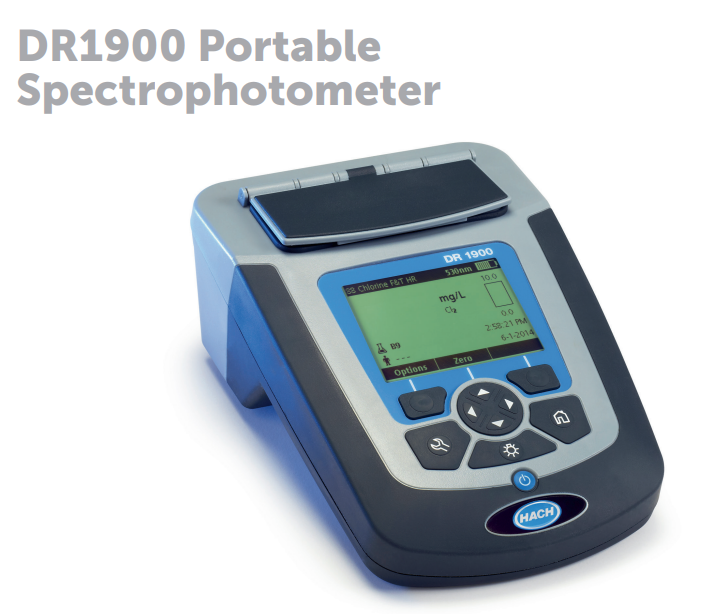
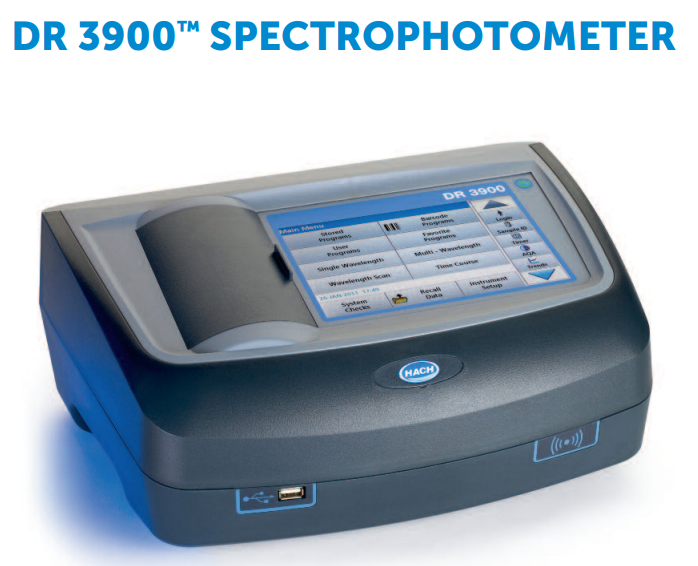
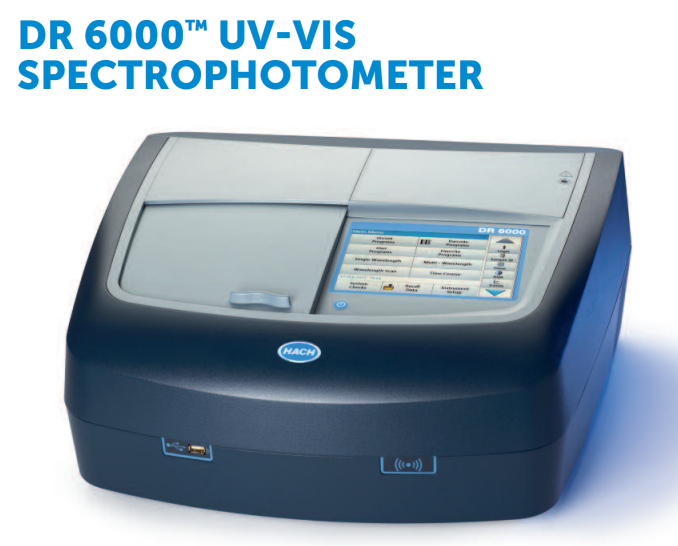
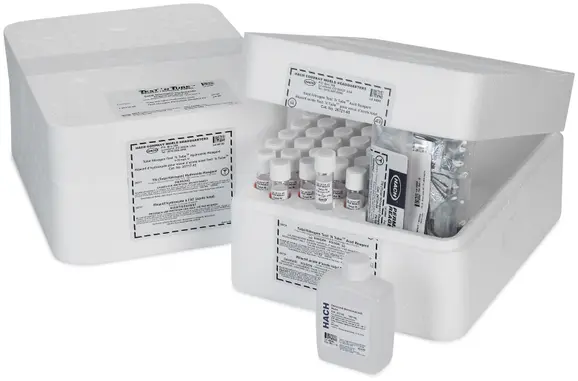
An alkaline persulfate digestion converts all forms of nitrogen to nitrate. Sodium metabisulfite is added after the digestion to eliminate interferences from halogen oxides. Under strongly acidic conditions, nitrate reacts with chromotropic acid to nitrate the biphenyl rings at several locations, forming several nitrated products. The nitrated products are measured at 410 nm.





